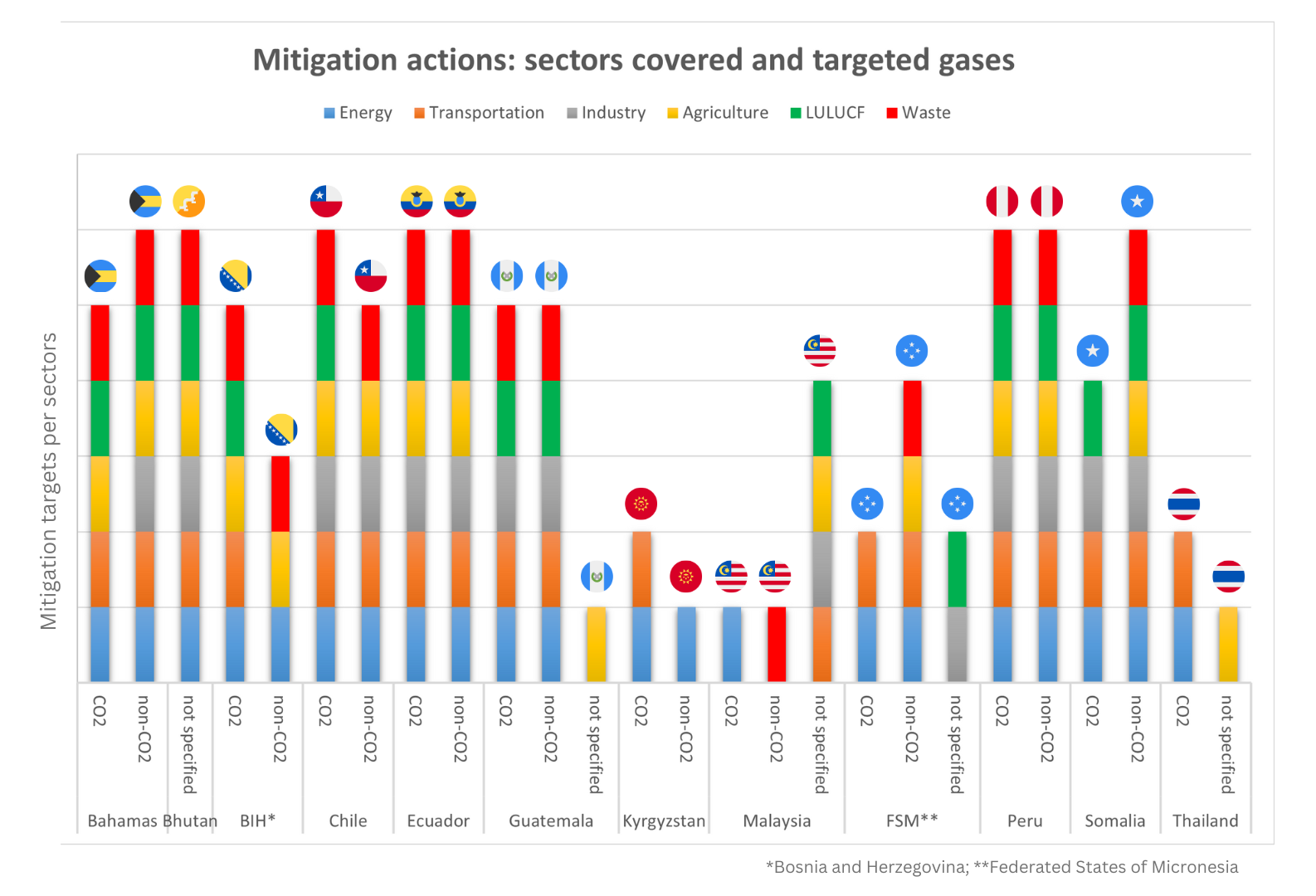
UN Climate Change News, 28 November 2023 – Transparency of climate action is a crucial driver of low-emission, resilient development. During the last two months, the technical analysis of Biennial Update Reports (BURs) submitted by twelve developing countries has shown their active engagement in ambitious mitigation actions.
Spanning multiple sectors – from energy, transportation and industry to agriculture, forestry, land use or waste – mitigation actions were reported by Bahamas, Bhutan, Bosnia and Herzegovina, Chile, Ecuador, Guatemala, Kyrgyzstan, Malaysia, Micronesia, Peru, Somalia and Thailand.
Three rounds of technical analysis of the BURs were conducted by teams of technical experts supported by the UN Climate Change secretariat in Bonn, Germany; Panama City, Panama (during Latin America and the Caribbean Climate Week); and Johor Bahru, Malaysia (during Asia-Pacific Climate Week).
Recognizing the energy, agriculture and forestry sectors as primary sources of greenhouse gas (GHG) emissions, the countries reported notable mitigation actions in those areas, addressing various types of GHG – encompassing both CO2 and non-CO2 emissions.

Country actions in the energy sector
The Bahamas is planning a 40% increase in solar water heaters by 2030 compared to 2022. Chile’s national energy policy is aiming to generate 80% of electricity from renewable sources by 2030. Similarly, Micronesia plans to generate over 70% of its electricity from renewables by 2030, while Bosnia and Herzegovina aims for a full transition to renewable sources by 2050.
In Bhutan, hydropower projects have contributed to an estimated 97% of emission reductions between 2016 and 2020, while Kyrgyzstan has focused on mitigating gas losses through reconstruction and replacement of main gas pipelines and the promotion of public transport. And Thailand’s Energy Efficiency Plan has charted a roadmap for a 30% reduction in energy use by 2036 compared to 2010.
Transforming agriculture, forestry and land use
In Somalia, where 92% of national emissions come from the agriculture, forestry and land use sector, key mitigation actions include sustainable plans for the livestock sector, the introduction of nitrogen-fixing plants, and the protection of existing forests.
Guatemala is pioneering a national cattle policy to curb the carbon footprint of meat production from 5.8 to 2.4 kg of CO2 equivalents through innovative silvopastoral systems. Ecuador’s notable success in curbing GHG emissions in the forestry sector earned the country its first REDD+ payment from the Green Climate Fund in 2018.
Similarly, Peru’s “Cordillera Azul” National Park REDD+ Project led to the creation of a perpetual fund for the management of the park. In Malaysia, reducing deforestation, the sustainable management of forests, and the conservation of carbon stocks has resulted in emissions reductions of around 108,000 Gg of CO2 equivalents between 2017 and 2019.
Preparing for the enhanced transparency framework
A common hurdle has emerged in nations’ climate challenges: navigating the delicate balance between ambition and limited resources. Financial constraints pose a barrier to the implementation of Nationally Determined Contributions (national climate action plans).
During the technical analysis, technical experts – in consultation with countries – identified capacity-building needs to enhance future reporting and support the transition to the enhanced transparency framework. These include reinforcing quality assurance and quality control procedures and training national experts to navigate the GHG-inventory methodologies.
The capacity-building needs identified reiterate the essential role of international support in ensuring enhanced transparency and implementation of climate actions.
Source: Excerpt from UNFCC

